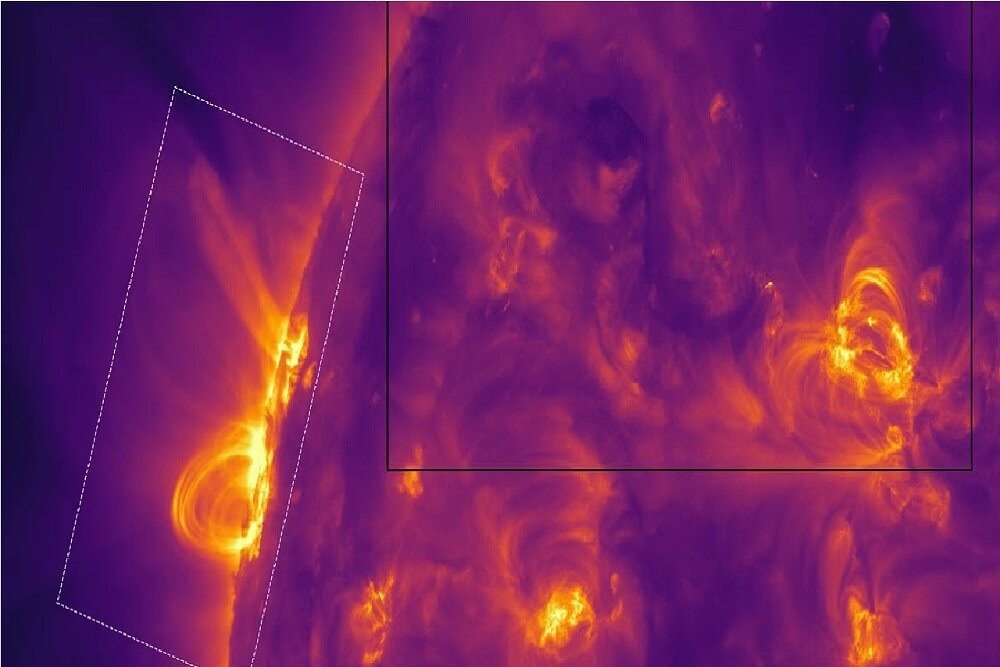The most powerful solar telescope on Earth has just given us a key to help unravel the magnetic mysteries of the Sun.
According to RCO News Agency, Daniel Kay solar telescope. Daniel K. Inouye has provided a map of the magnetic fields in the Sun’s corona, the hot, burning region of our system’s star.
This information is vital for understanding solar eruptions, sunspots, solar flares and the strange mystery of the sun’s atmosphere being hotter than its surface in a region called the photosphere.
Tom Schad, an astronomer at the National Solar Observatory of the National Science Foundation of the United States of America (NSO), says: The achievement of the Inouye telescope in mapping the magnetic fields of the Sun’s corona is a testament to the innovative design and capabilities of this unique observatory. This promising development will improve our understanding of the solar atmosphere and its impact on the solar system.
The surface of the Sun is very turbulent and bright, and there’s a lot of really energetic turbulence going on. We can often see the results of these shenanigans, including flares and coronal mass ejections that hurl billions of tons of solar particles into the solar system, but the processes that drive them are notoriously difficult to study in detail on a small scale.
Magnetic fields play an important role in solar flares. Magnetic field lines are constantly rotating, entangling, stretching, breaking, and reconnecting. Sunspots are regions in the photosphere where magnetic fields are particularly strong, and when the magnetic field lines break and reconnect, the process produces a powerful burst of energy and heat that can send solar material flying.
Although we often don’t have a clear view of the Sun’s corona, during a solar eclipse, when the Moon blocks the Sun, we can see currents and other phenomena in the Sun’s corona in incredible detail.
The design of some solar instruments has been inspired by this phenomenon, including a piece of equipment known as a coronagraph to block the solar panel so that we can clearly see the Sun’s corona.
Inoue telescope is one of these telescopes. This feature, along with its high-resolution capabilities, makes it a powerful tool for studying processes in the Sun’s atmosphere that are difficult to see.
To map magnetic fields in the solar corona, the telescope used its cryogenic near-infrared polar spectrometer to record something called the Zeeman effect. The Zeeman effect is when light in a particular line in a spectrum is split into several lines in the presence of a magnetic field. Scientists have previously attempted to observe the Zeeman effect on the Sun, but with limited success.
Using the Inouye telescope, Chad and his team found clear indications of the Zeeman effect in the spectral line emitted by iron atoms in the solar corona. In addition, they were able to observe its polarization, which provides an unprecedented view of the solar corona’s magnetic field.
According to the researchers, this is just the first step, and future observations and analyzes will improve our understanding of the physics of the Sun’s atmosphere and, in turn, of the space climate caused by powerful eruptions that can be felt on Mars and beyond. .
Astronomer and NSO director Christoph Keller, who was not involved in the research paper, said: “Mapping the strength of the magnetic field in the solar corona is a fundamental scientific advance that will benefit not only solar research, but astronomy in general.”
He added: “This is the beginning of a new era in which we will understand how the magnetic field of stars affects planets, here in our own solar system and in thousands of other systems that we now know about.”
end of message
RCO NEWS


















